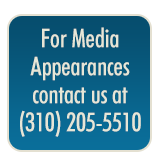Interviews |
Aug. 29, 2001 - Verdicts and Settlements The Eyes Have ItAttorneys can ensure an attentive jury by using engaging and simple graphics that increase the probability that Jurors will understand and recall the facts or concepts counsel illustrates. Q: To win cases, must counsel use visual aids or graphics? By using graphics or visual aids, counsel is engaging two of the juror's senses: visual and auditory. This greatly increases the probability that jurors will understand and recall the facts or concepts counsel strives to illustrate. Attorneys should endeavor to control the imagery and thoughts
that occur in jurors' minds during a trial. Graphics provide an
opportunity to create and control concrete images of the facts
and scenarios for the juror. Professional graphics allow counsel to clothe following:
Q: What kind of information should be presented in graphic form? A: Lawyers typically think of graphics as blowups of evidentiary documents, but it is critical to consider 'he-visual potential of all concepts presented at trial. Can counsel draw particular visual analogies or metaphors? Does a concept lend itself to a graphic depiction or animation? One of the easiest and most important graphics in counsel's arsenal is a timeline. This is an effective method of conceptualizing the pertinent information jurors need to digest when the events occurred, where gaps exist, when actions coincide, plaintiff actions relative to defense actions and other important events. Taking it one step further, and to avoid "chart junk" if the number of events to be presented is high, counsel can use a magnetic board, One at a time, the advocate can add pieces of Information onto the timeline as the story of the case unfolds, This strategy engages jurors, holds their attention and gives them a concrete mental image through which to filter the words being used. " Graphics should not be used to show off to a jury. They should only be used if they simplify the presentation of critical factual information," Thomas J, Nolan says. Nolan is the managing partner of Howrey Simon Arnold & White's Southern California offices and a seasoned litigator. " In the Litton Systems Inc. v. Honeywell he. antitrust trials, where the jury awarded over a quarter of a billion dollars to Litton, we used graphics to explain a complicated timeline of critical events. A timeline is much like a table of contents for a textbook. A simple timeline can be a juror's anchor in trying to process the informs Don," Nolan says. Q: When should counsel use graphics? A: Counsel should use and reuse graphics throughout the trial. The key to having graphics admitted during opening statements
is for counsel to ensure that the illustrations and verbiage are
not argumentative, A: The biggest mistake lawyers make is putting
too much information, or chart pollution, onto the visual. This
just confuses the jury. " A focus group gives the trial learn the chance to ensure
that what the jurors see in the graphics or other demonstrative
evidence is relevant to the case," Hennington says. This is
an opportunity to lease out any non relevant issues and understand
exactly what the jurors will take away." Q: Aesthetically, what makes a good graphic? A: Less is more. Use icons and focus on the main points. Size matters. Big graphics are easier to read and more accessible, They command attention and give added importance to the information depicted. To ensure that a graphic is aesthetically pleasing, Andrew Spingler, graphics designer and founder of the Focal Point in Oakland, recommends clarity The power lies in a clear graphic and simple design," Spingler says. "Die information needs to be dearly presented, which will in turn make it pleasing to the eye. The layout of the information should be logical, especially in patent patent where there are technological concepts being presented." Spingler also recommends using titles. " Jurors are generally looking for clues about what they
should conclude. Titles can guide jurors to that conclusion, without
being argumentative," he says. |

View Spanish Language Version

